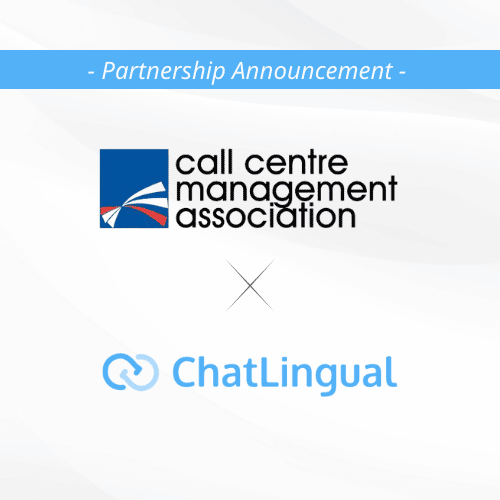The English language may cast the widest net when it comes to global customer service, but is it the best approach? By today’s customer experience standards, companies should no longer be settling for a one-language-fits-all model. Be better, be multilingual.
Multilingual customer support is where businesses make the effort to speak the native language of their target customer, rather than defaulting to non-native languages like English. Consumers value this effort, with CSA Research finding that 76% of online shoppers in 29 countries prefer to buy products with information in their primary language.
This presents an opportunity for enterprises to enable multilingual support. To do this, it’s important to understand common operating models in contact centers.
Continue reading as we explore central hubs, and how they help businesses to centralize and consolidate multilingual support operations.
What is the Most Common Contact Center Operating Model?
When creating a strategy to enable multilingual customer support, it seems logical to hire and manage support teams within each country. This is known as in-country operations.

If a business wants to expand its support from the UK to include Germany, this might involve renting German office space, hiring German support agents, and managing contact center operations in both Germany and the UK.
On the surface, this sounds great. To serve German customers, surely support based in Germany makes the most sense. You might think so, but recent trends tell a different story.
According to research by the CCMA, many organizations are migrating away from in-country operations towards central hubs. The CCMA says central hubs are the “most common contact center operating model.” What’s the explanation for this shift?
Why are Central Hubs the Most Common Contact Center Model?
Central hubs are the most common operating model for contact centers. This is due to numerous tangible benefits when consolidating contact center operations:
- More Consistency
With one central team, versus multiple geographically distributed teams, contact center service delivery is more consistent.
A research participant for the CCMA said, “Originally much of our contact was handled locally. We have consolidated that over time into central hubs and that has enabled us to capture insight and ensure consistency of experience.”
- More Oversight
Especially for customer support in regulated industries like healthcare and finance, executives have more comprehensive oversight over centralized teams. This ensures that regulations are adhered to for each customer query, maintaining the quality of customer experience.
- Easier to Scale and Manage Teams
If one team shares support services and platforms, it is easier to scale operations with a centralized team. This is in contrast to in-country operations which increase the IT management burden, complicate workforce management, and still require a centralized management team to orchestrate with the head office.
A Sales leader at WEX added, “It’s really difficult to exit anybody on performance in Europe. German employment law, for example, is a minefield.”
- Easier to Share Insight
Shared systems enable easier and faster sharing of insight within centralized teams. This includes insights on demand patterns, customer feedback, and purchasing habits. With in-country operations, business intelligence (BI) would need to be translated and exported to the head office before insights were available.
3 Steps You Can Take Now to Centralize and Consolidate Your Contact Center
Now we know that central hubs are the most common operating model, thanks to benefits around customer support consistency and scaling, combined with greater oversight and knowledge-sharing potential.
What steps can businesses take to centralize and consolidate contact center operations and unlock these benefits?
- Outsourcing
According to the CCMA, recruitment and retention are big problems for multilingual contact centers.
In response, outsourcing is one way to speed up the consolidation of a contact center. Many businesses choose multilingual Business Process Outsourcing (BPO) support partners located in Eastern Europe due to lower workforce expenses. This also skips the time- and money-intensive process of finding and hiring qualified employees, as well as maintaining the workforce over time.
- Simplify Your Technology Stack with Agent Desktop Software
As mentioned in the previous section, different customer support systems between locations can lead to friction and inefficiency.
Businesses can consolidate their multilingual technology stack using agent desktop software like ChatLingual. It includes automated ticket and interaction logging, and an orchestration layer for reusable API integrations.
Support agents, in particular, benefit greatly from a single UI for all customer service tasks. Unified agent desktops simplify the technology stack by eliminating the need to switch between multiple applications resulting in reduced stress and enhanced workforce agility.
- Reduce Workloads for Under-Staffed Teams with Content Libraries and Chatbots
Perhaps your business is hesitant to switch off in-country operations, as a small group of customers rely on this service; however, your central hub cannot yet cater to their needs.
Content libraries help to automate low-level responses to reduce overall agent workloads; multilingual content libraries boost the comprehensibility of service agent responses ChatLingual offers industry-leading live chat translation, meaning non-native agents can still understand and respond to multilingual customers. This delivers seamless translation across 100+ languages—at 97% comprehensibility.

For businesses that simply cannot find support agents for a target language, conversational AI chatbots bridge the gap. ChatLingual’s always-on, 24/7 live chatbots translate inputs to deliver a powerful native language experience. It fully integrates with existing chatbot software like Zendesk, enhancing capabilities to deliver higher CSAT scores with lower overall operational costs.
Chatbots can be used to greet and onboard new website visitors, giving customers the power to help themselves and further reduce agent workloads. Self-service tools like chatbots are quickly becoming one of the best ways to improve customer engagement, optimize the sales funnel, and enhance the customer journey.
Adopt Central Hubs to Consolidate Your Multilingual Contact Center Operations
As mentioned by the CCMA, central hubs are the most common contact center operating model. Businesses adopt this model due to benefits around service consistency, insight sharing, easier team oversight, and more efficient scaling of operations.
Businesses can outsource their contact center operations to BPOs, as they migrate towards the central hub model. Alternatively, ChatLingual offers an agent desktop and AI translation services that help you become a central hub faster.
By simplifying your technology stack with the ChatLingual agent desktop, employees and executives share a common system. This improves consistency, awareness, and simplifies analytics and reporting. AI translation overcomes staff and skills shortages, enabling a “virtual employee” that delivers 97% comprehensibility in its responses across 100+ languages. Schedule a call with ChatLingual to begin your journey towards multilingual, AI-driven customer support today.



